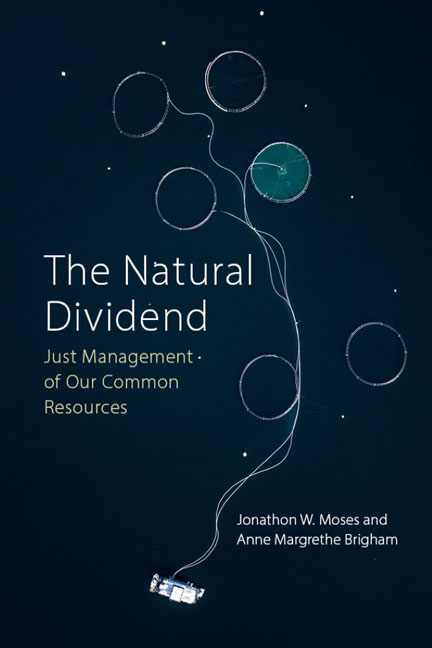Book contents
- Frontmatter
- Dedication
- Contents
- Acknowledgements
- Abbreviations
- 1 Introduction
- 2 Who owns the sun?
- 3 The Natural Dividend
- 4 The earth: the market for land
- 5 The sea: the market for salmon
- 6 The sky above: the market for renewable energy
- 7 The earth beneath: the market for fossil and mineral resources
- 8 A common market? The market for global resources
- 9 Conclusion
- References
- Index
1 - Introduction
Published online by Cambridge University Press: 20 January 2024
- Frontmatter
- Dedication
- Contents
- Acknowledgements
- Abbreviations
- 1 Introduction
- 2 Who owns the sun?
- 3 The Natural Dividend
- 4 The earth: the market for land
- 5 The sea: the market for salmon
- 6 The sky above: the market for renewable energy
- 7 The earth beneath: the market for fossil and mineral resources
- 8 A common market? The market for global resources
- 9 Conclusion
- References
- Index
Summary
We are being thrust, full force, into a new world. In response to constant demands for growth, a dwindling supply of natural resources, environmental perils and the threat of climate change, we need to embrace a post-carbon world – or risk serious damage to our planet. Our generation has begun a frantic race to find alternatives for the scarce resources that previous generations have relied upon. In our pursuit of these alternatives, however, we must avoid the pitfalls of the past. This is the motivation for the book in your hands.
The scientific evidence and consensus is clear: we need to quit oil, gas and coal, and do so quickly. We cannot continue as before, and the war in Ukraine has not blunted that consensus. Already in 2015 it was known that we needed to leave “a third of oil reserves, half of gas reserves and over 80 per cent of the current coal reserves” in the ground if we hoped to meet the 2°C Paris climate goals (McGlade & Ekins 2015: 187). To replace these important sources of energy, the world is rushing to discover and develop new resources on two very different fronts.
The first front is aimed at renewables. The demand for new renewable energy resources – such as wind, solar, bio-, geothermal and hydro – is proving insatiable, and global investment in this sector has been extraordinary. BloombergNEF estimates that global investments in this energy transition totalled $755 billion in 2021 – a phenomenal increase from the $32 billion invested in 2004 (BloombergNEF 2022). Much of this investment activity has been spurred by the sundry incentives provided by political authorities that are eager to expand access to nature's renewable resources.
The second front seeks non-renewables. Although there are many advantages in transitioning from carbon-based energy (coal, oil, gas) to more renewable sources of energy (fuelled by, e.g., the sun and the wind), we cannot escape our dependence on non-renewable resources. This transition will require millions of tonnes1 of new raw materials to be mined. Batteries depend on cobalt, lithium and nickel; the magnets for electric generators and motors rely on neodymium and other rare earth elements; and the lines that connect the diverse components of the green economy are made mostly from copper.
- Type
- Chapter
- Information
- The Natural DividendJust Management of our Common Resources, pp. 1 - 24Publisher: Agenda PublishingPrint publication year: 2023

